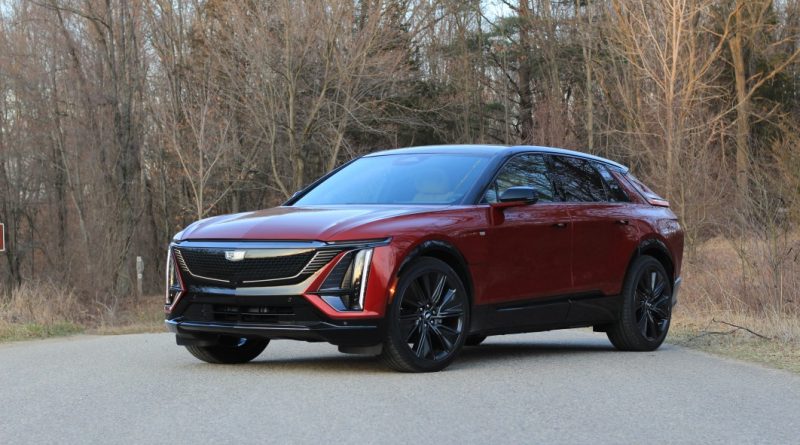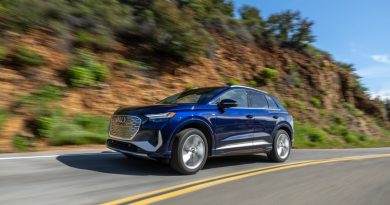2024 Cadillac Lyriq Sport AWD Road Test: Old-school drive with new-school looks
It’s been nearly two years since we got behind the wheel of the Cadillac Lyriq for the car’s formal first drive. In case you were wondering, no, that’s not a normal amount of time between when we initially drive a car and when it becomes available for a more thorough test via a weeklong loan. But very few things about the Lyriq’s launch and subsequent production woes were normal. Only now that Cadillac is confident in its ability to crank out a reasonable amount of Lyriqs to keep dealer inventories up – the first quarter of 2024 saw 5,800 sold, up from only 968 delivered across the same stretch of 2023 – are we getting the opportunity to drive the electric SUV again.
The Lyriq in question here is a version we haven’t driven before, too. Specifically, it’s the Sport 3 trim, and it’s spec’d with a dual-motor all-wheel-drive powertrain that puts a walloping 500 horsepower and 450 pound-feet of torque to the pavement. The single-motor, rear-drive Lyriq we drove previously is down 160 horsepower compared to the dual-motor, but frankly, this electric SUV is less about performance and more about maximum luxury.
That much is clear when you hop in the cabin and notice the care that Cadillac put into the Lyriq’s design. My loaded tester’s final price may be a towering $83,500, but the Lyriq’s interior genuinely feels like an $80,000 interior. Point to the Tesla Model Y’s $45,000-$55,000 price point all you want – there’s a reason it’s so much cheaper, as it doesn’t even come close to matching the Lyriq’s level of luxury and materials quality.


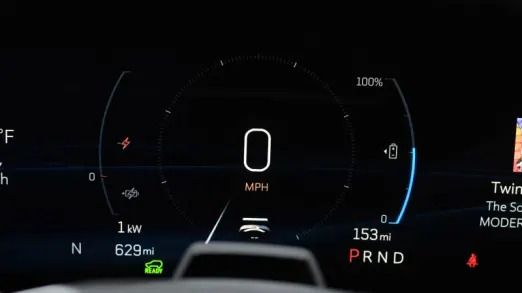
It’s easy to be distracted by all the elegant adornments, but I jumped straight into the vast 33-inch display to see how that performed. If you recall, the Lyriq’s Ultium platform-mate, the Blazer EV, had all sorts of issues with its infotainment system upon launch that, among other things, it forced a stop-sale. Despite the platform relationship, Cadillac’s infotainment is its own monster. It retains wireless Apple CarPlay and Android Auto functionality (albeit compromised in a little box due to the odd screen shape), but it also runs GM’s Android Automotive software that allows you to log in to your Google account. It sure was seamless logging in, though there was a good 10-minute lag before I was able to use the native Google Maps navigation system. After soldiering through that snag, it operated flawlessly the rest of my weeklong test.
Getting your bearings inside the Lyriq will take a short minute if you’re accustomed to other Cadillac interiors. It’s mostly due to the unique steering wheel buttons that give you quick access to a number of items via a light touch, but also because Cadillac has gone full Mercedes with its door-mounted seat controls. Even the lumbar and massage settings are accessed from the door, as there are zero controls on the seat itself. All of these high-quality buttons and toggles (there’s essentially a physical control for every possible often-used car control) run opposite to what so many other brands are applying to their EV interiors. For the long-time Cadillac buyer and anyone stepping into their first EV, it’ll be an easier learning curve.

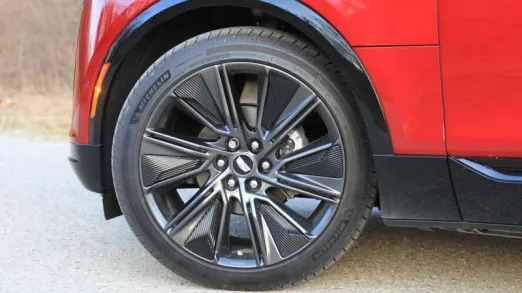

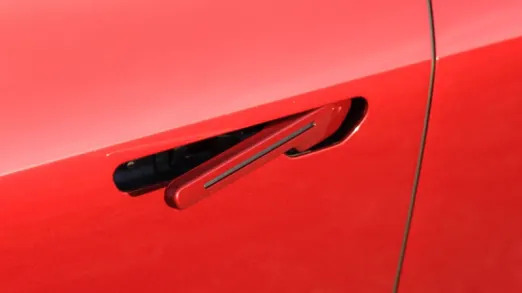
Upon first setting out, it’s immediately apparent that Cadillac is bringing some old-school vibes to the party with a surprisingly slow steering rack. It’s a little off-putting at first as you’re required to crank in more lock than is normal for today’s typically quick steering racks when making tight maneuvers. Engineers tell us the Lyriq’s slower steering is on purpose to provide “a balance of smooth, predictable low-speed maneuverability and stable, responsive steering feel at higher speeds.” In reality, it feels like the sort of steering you’d find in a Cadillac from before the brand dynamically spun 180 degrees with high-performance chassis tuning: slow, lazy and a little cumbersome. I’d prefer a quicker rack that’d make the car feel more agile at low speeds, but that said, I did like it at higher speeds when testing its handling and general stability on the highway. Quicker racks can make a car feel artificially darty or light on its feet, but there’s still merit to the easy-going strategy Cadillac took here.
That same easy-does-it feel applies to full-throttle applications off the line, too. You’d think that 500 horsepower would be a neck-snapping good time, but no matter the drive mode, the Lyriq is – once again, purposefully – going to ease itself off the line before eventually pinning you back once you’re already underway. To that effect, quick stabs of the throttle while at speed will be responded to with alacrity, but you won’t be able to scare anyone with a launch control start as many other EVs boast.

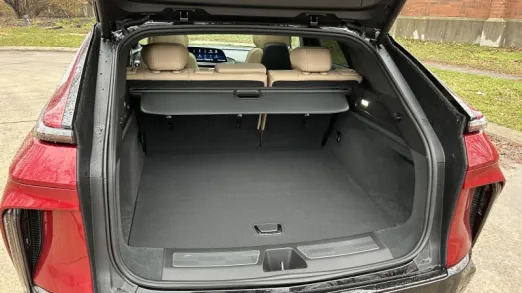
Ride quality over Michigan’s broken roads is respectable enough, though it’s worth noting the lack of adaptive dampers on the Lyriq, which is a feature that is at least optional on other Cadillac models. GM dialed in a ride balance that is neither mega-plush nor razor-sharp for handling, instead straddling a nice middle ground between dynamic extremes and Cadillac eras. Most Mercedes and BMW EVs are comfier, but I think the majority will find the Lyriq’s ride to be amicable. When you start to push the chassis like one of Cadillac’s enthusiast darling sedans – CT4 and CT5 – it doesn’t fall apart, but you’ll know the all-wheel-drive Lyriq weighs 5,789 pounds in every corner and when braking heavily. It lumbers its way through twisty roads like a muscle car – it’s still competent enough to be driven with pace but does so as if saying, “I’d rather be going in a straight line.” And hey, 500 horsepower is never not fun, making the Lyriq oodles more smile-worthy than any of Cadillac’s gas-powered crossovers.
The active noise cancellation technology that uses sensors in the wheels works shockingly well to eliminate any sort of tire noise from the 22-inch wheels wrapped in Michelin Primacy all-season rubber. However, this particular test vehicle had unusually loud wind noise coming from what sounded like where the windshield meets the roof. I asked Cadillac about it, and its engineering team looked into the problem. Turns out, there was an issue with the A-pillar trim piece on this particular test vehicle, Cadillac tells me. We’ll be looking out to see if the next Lyriq we drive has this wind noise sorted.
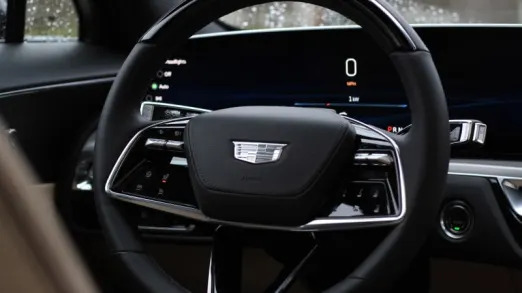
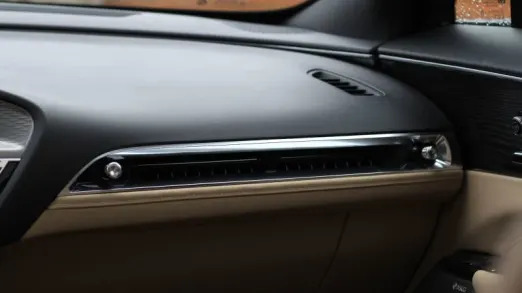
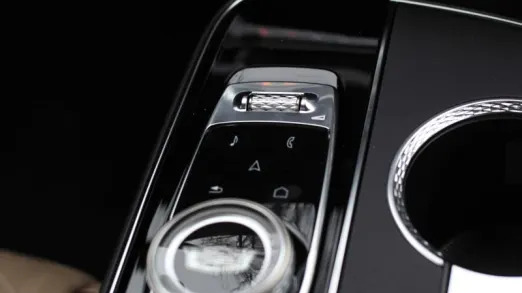
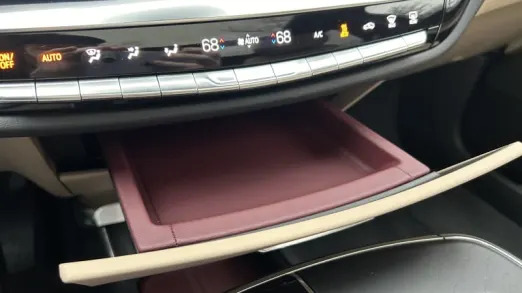
Thankfully, the noise was quiet enough that playing some tunes on the 19-speaker AKG audio system could block it out – and man, this is one rocking system when you turn it up. It’s lovely to listen to when soaking up highway miles on Super Cruise, which is as good and advanced as it gets when paired with the Lyriq. Its active-lane lane changing is extremely well-executed, and its general obedience and ability to follow lane markings is still unmatched. That said, Super Cruise canceled itself unexplainably more than a few times over the course of 100 miles of highway driving in areas where it hasn’t before in previous tests. The system smartly switches off in tricky construction zones or highway merges, but this Lyriq’s unexpected cancelations felt more like glitches than the system recognizing a dangerous situation, as I was simply traveling along normal, empty highways that shouldn’t have triggered a shutoff. To further emphasize the point, the system would let me immediately re-engage Super Cruise right after these shutoffs, making it all the more eyebrow-raising.
The 102-kilowatt-hour battery pack is rated for 307 miles of range, even in this Sport 3 model with its large 22-inch wheels. That’s impressive given that the single-motor RWD Lyriq only manages to go another 7 miles at 314, according to the EPA. Given that small range penalty, it’s essentially a no-brainer to go with all-wheel drive should your budget stretch the extra $3,500 it costs. You get both improved acceleration and all-weather traction without needing to worry about cold weather being too much of a range killer. Charging is solid with a 190-kW maximum charge speed, but while that may have sounded great a couple of years ago, it’s now firmly mid-pack compared to other EVs.
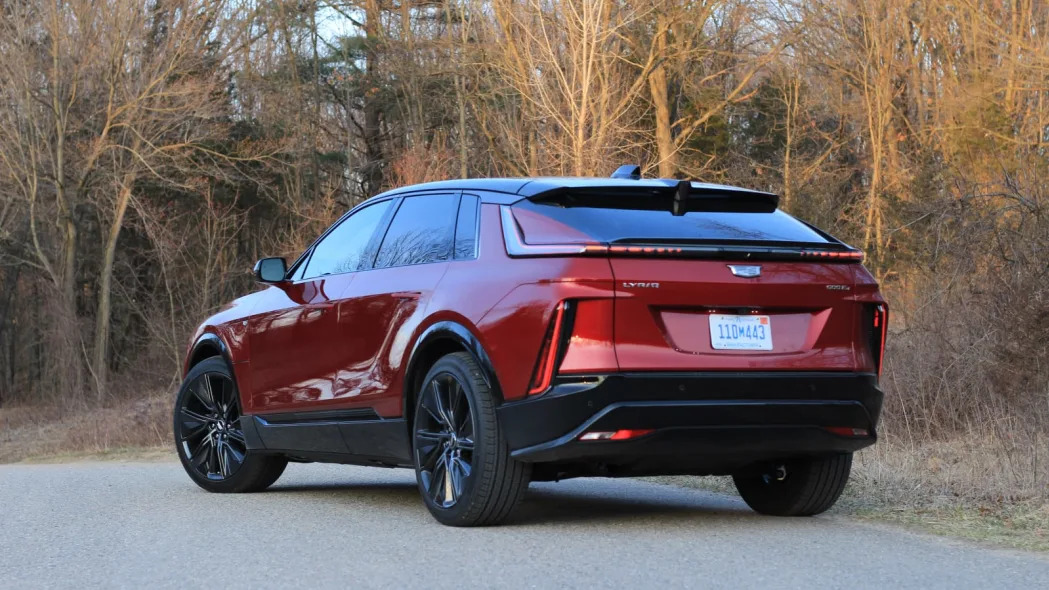
One thing that hasn’t changed since the Lyriq’s launch, though, is how ridiculously good it looks. The funky wrap-around taillights, wild light show on approach/departure, and slick, aerodynamic shape still look elegantly futuristic. Details like the contrasting pieces of leather in and lower front seat storage area would bring a smile to my face every time I hop in the car. Plus, the colors on offer both inside and out (green on green is an option!) will ensure you can go as wild or low-key as you’d like.
At this point, Cadillac sounds confident in its electric SUV, so much so that it’s finally building them in proper numbers. That said, the few foibles this test car had are enough to give me a slight pause, even if the week in it was largely a luxuriously good time. Cadillac’s lost the element of being first-to-market with the large production delay, too, as the Genesis GV70 Electrified, Mercedes-Benz EQE SUV and others were able to more firmly stake their claims on the market. Regardless of the competition, it’s great to see that the Lyriq is finally getting its big break, and that you can now finally obtain a piece of what Cadillac’s future is meant to be.
Related video:

